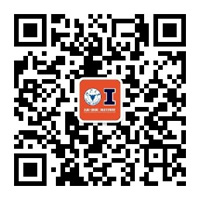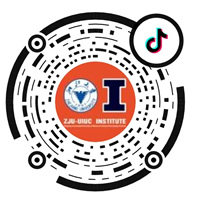Not long ago, the unique senior design course for the class of 2021 came to an end in a special award ceremony. Several teams received special recognition:
- “A crowd-sourcing urban air quality monitoring system with bikes” won the Most Potentially Socially Impactful Award.
- “Augmented Reality and Virtual Reality for Electromagnetics Education” won the Best Software Project Award.
- “A Micro-Tribotester to Characterize the Wear Phenomenon” won the Best Engineering Project Award.
- “An Engineering Solution to Auto Chess Set” won the Best Interactive Project Award.
- “Simplified Device for Fasteners Counter” won the Most Commercially Viable Project Award.
- “Wireless Charging Table Supporting Multiple Devices with Arbitrary Placement” won the Most Interdisciplinary Project Award.
ECE445 / ME 470 Senior Design was a course offered in the spring and summer semesters of 2021, with 105 fourth-year students enrolled majoring in Computer, Electrical, and Mechanical Engineering. ZJUI Assistant Professors Mark Butala, Timothy Lee, and UIUC faculty member Professor Arne Fliflet were the instructors. More than 20 professors from ZJUI and UIUC participated in on-site or online project guidance and review.
This course has many distinguishing elements, which include the following.
Innovation 1: Strengthening the process management and development of senior design into a compulsory course
In undergraduate engineering education, senior design contributes a key, capstone portion of engineering teaching practice, combining theory and practice that cultivates and assesses students' comprehensive ability. In China, the traditional senior design course is an independent link before graduation, and it is usually evaluated through several important steps such, as project initiation, mid-term, presentation, and defense, with the greatest emphasis given to the final presentation and defense.
At ZJUI, we have adopted the UIUC approach where senior design is a required course which evaluates students' writing, teamwork, presentation skills, and most importantly, the ability to synthesize the theories, knowledge, and skills learned to solve real-world problems in a holistic manner. Developing senior design into a formal course means that the implementation process is more rigorous, and it also means that there is more support and supervision from the course instructor and teaching assistant team in addition to the project supervisor. With the support of numerous lectures, assignments, and rich resources on the course website, the process management of senior design has strengthened so that students can consolidate all aspects of senior design and continuously improve their comprehensive ability to solve the real-world problems including: how to choose a topic, how to record lab notes, how to improve the efficiency of teamwork, how to make group decisions and identify research approaches, to project proposals, individual progress reports, design reports, mock presentations, final reports, peer reviews, teamwork, and many other aspects.
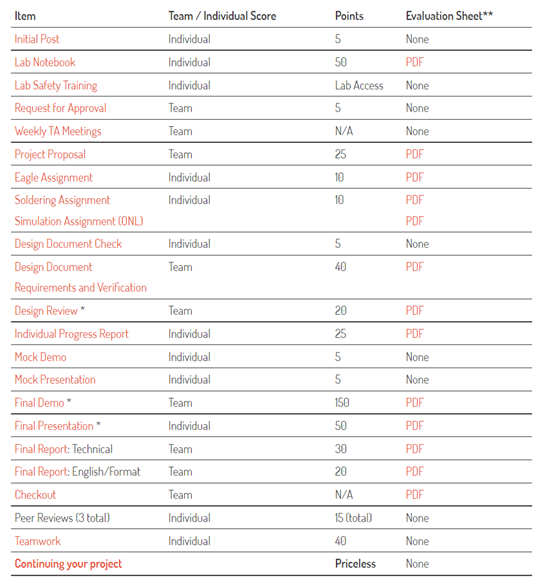
▲ Figure 1: List of assignments and evaluations
With the construction and utilization of the interactive course website, senior design was conducted in a manner with more intuitive and systematic recording and presentation of the implementation process, more regular auditing and guidance, more regular management and promotion, and a more phased and process-oriented scientific evaluation.
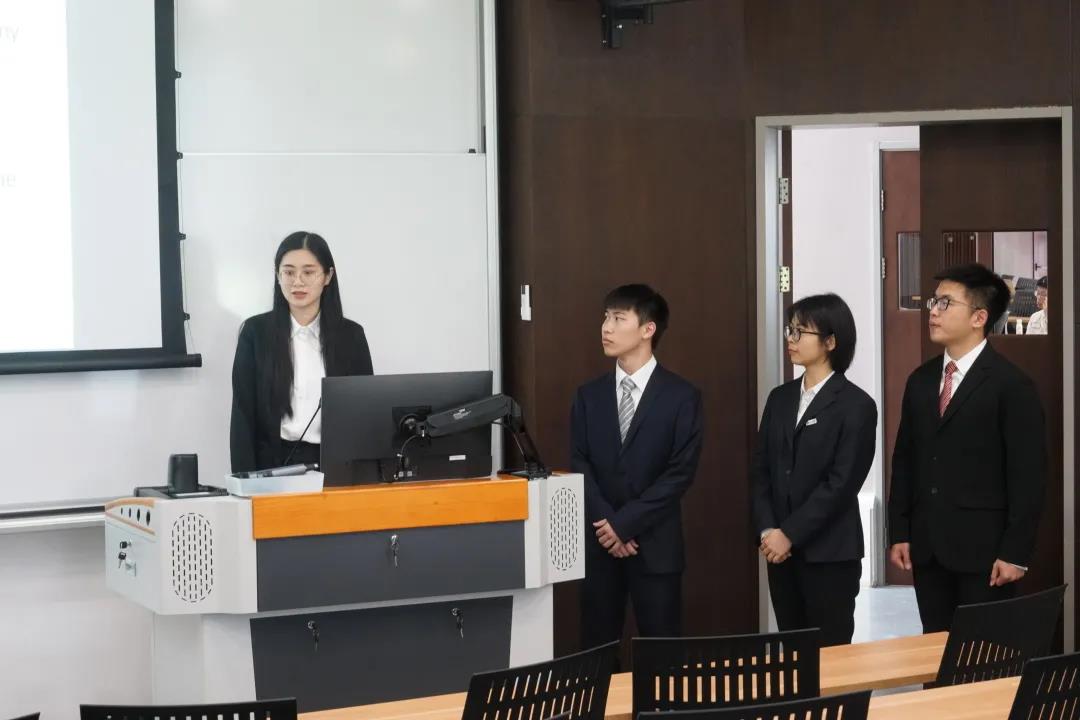
▲ Figure 2: On-site Defense
Innovation 2: Realization of cross-disciplinary innovation in senior design
Recently, undergraduate engineering education has assigned greater importance to the cultivation of students' innovation and entrepreneurial ability and cross-border integration ability. In order to promote cross-discipline and cross-cultivation innovation, ZJUI has conducted a novel way to implement senior design, shifting from teams divided by engineering major to cross-disciplinary groups. The course requested students to form teams freely except that teams must include members from different engineering disciplines. Most teams included students from all three majors. In the project design and task development, clear requirements were also provided ensure projects included elements characteristics of the different engineering majors.
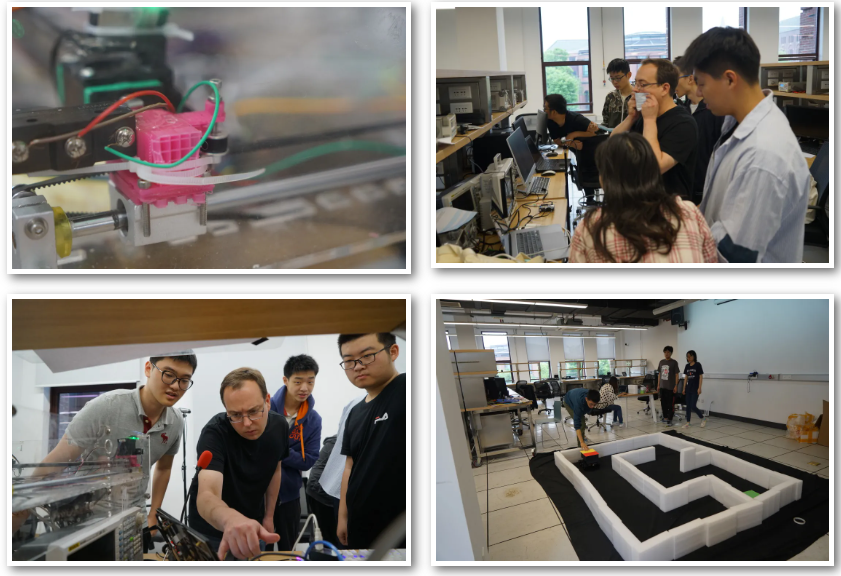
▲ Figure 3: Senior Design DEMO
Professor Mark Butala told us, "As the interdisciplinary teams were assembled and each team had a certain breadth of expertise, we requested each team to include electronic and mechanical components in their designs. This was actually an additional daunting challenge for each project, and we were pleased to see that many of the teams, exemplified by the 'Wireless Charging Station for Multiple Devices Placed Anywhere' team, produced highly synergistic, cross-disciplinary designs that incorporated mechanical, electrical, and computer science elements."
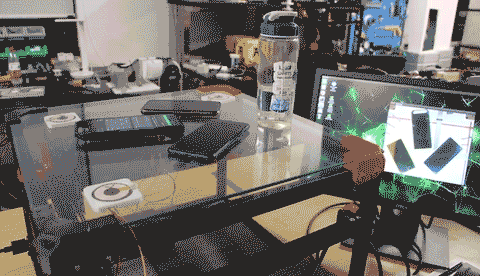
▲ Figure 4: Wireless Charging Station for Multiple Devices Placed Anywhere
Professor Arne Fliflet, who has taught the senior design course at UIUC nearly 10 times, said that because almost every team includes mechanical engineering students, the mechanical components of the ZJUI student design project had more depth of development and manufacturing, and the projects at ZJUI were generally more comprehensive and complex.
The cross-pollination and cooperation of different majors in this senior design course also generated brilliant creative sparks, broader engineering vision, and stronger ultimate solutions.
Innovation 3: Completing the challenge as a team and incorporating societal needs
The core purpose of senior design is to test students' ability and skill in applying their professional basic knowledge to solve practical engineering problems and help lay a solid foundation for their smooth adaptation to the real-world. Therefore, for this senior design course, ZJUI incorporated proven practices from UIUC: formal and systematic project development, team-based design and implementatino, and combining individual and team assessment. The 105 students, with representatives from three engineering majors, formed 27 groups, each with a faculty supervisor, to carry out their senior design tasks based on projects of their own selection.
At the beginning of the course, the instructors taught and provided course content and course materials on teamwork, including how to choose teammates, how to conduct brainstorming, and how to vote scientifically and efficiently to select research objectives, which provided good support for subsequent team management and operation. Professor Timothy Lee emphasized that “Students will have gained valuable insight on other disciplines and how to coordinate efforts to reach a goal through working together in interdisciplinary teams to complete the final project. It will greatly help them in their future careers as the more real-life experience they have, the better off they will be. In the real world, they will be hired by a company or work with a professor, but they will not be allowed to choose what they want to do and who they get to work with. Learning how to collaborate with others to accomplish tasks and challenges is an essential skill.”
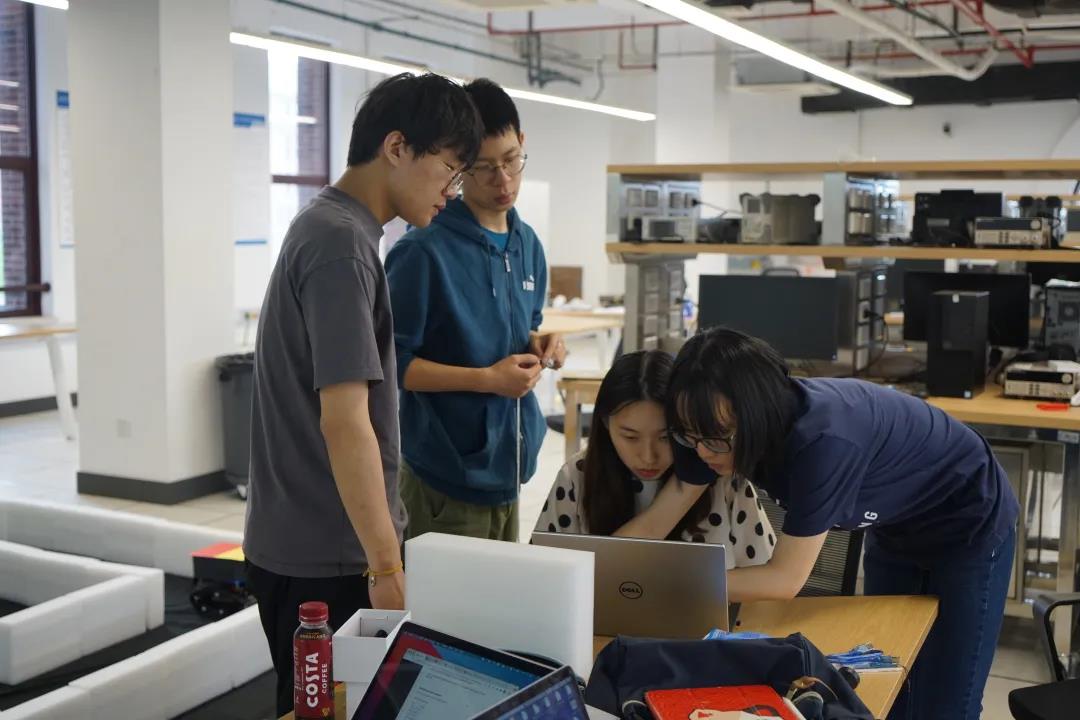
▲ Figure 5: Group Discussion
At the same time, in order to avoid situations where team members do not contribute evenly or individual contributions are unfairly shared by all team members, the course has mechanisms to balance team and individual performance, in addition to regular supervision by the instructor and teaching assistants. For example, there are several individual assignments that are the sole responsibility of each team member, participation of each team member is compulsory during presentations, and instructors maintain the right to grade individually if contributions are out of balance.
In reference to the development of teamwork throughout the ZJUI curriculum, Professor Butala mentioned that “Many real-world engineering problems are often complex, and engineers must also get used to drawing on the experience of different fields for support and listening to diverse voices and advice.” As Professor Butala said, ZJUI focuses on fostering hands-on research experiences for students as a team in the design of the curriculum and education plan so that students can broaden their knowledge while further exercising their leadership and teamwork skills, familiarize themselves with the process of solving real engineering problems, develop a sense of the big picture, and stimulate innovative thinking.
Innovation 4: Topic selection incorporating diverse features from multiple sources
“We encourage students to propose their own projects, which is an important starting point for innovation. On the other hand, this semester’s ZJUI projects benefitted from the ZJUI faculty providing project ideas and mentoring.” As Professor Arne Fliflet said, the student teams selected their projects using a variety of sources, incorporating characteristics from these multiple sources and embracing diverse ideas. The project topics were mainly selected by the students themselves, supplemented by the supervisors’ research projects and projects provided from industry, considering the students' interests and the frontiers of science and technology.
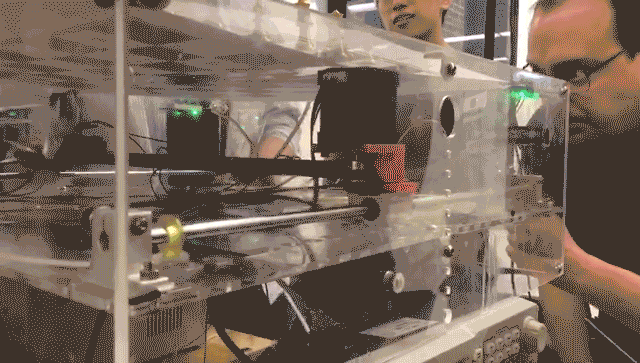
▲ Figure 6: An Engineering Solution to Auto Chess Set
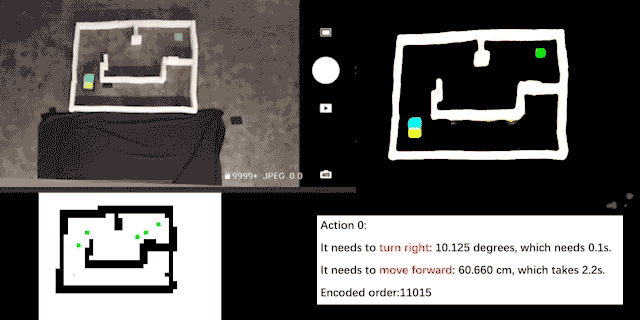
▲ Figure 7: Drone-SUGV Cooperative System
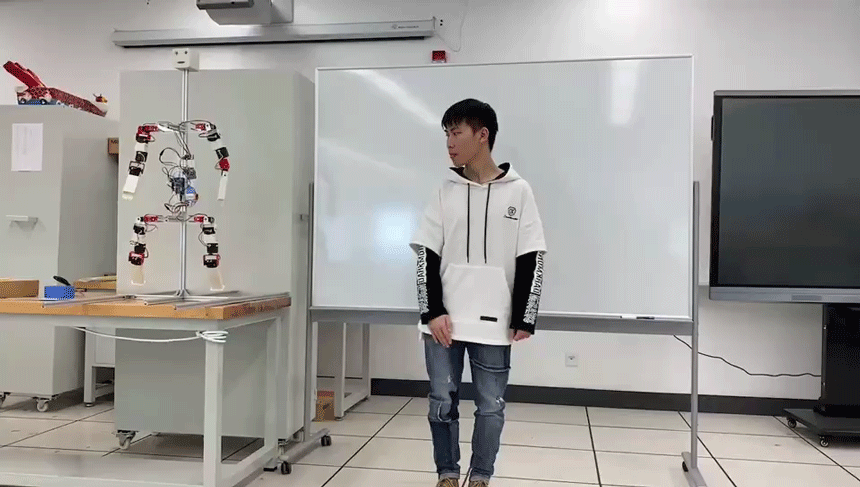
▲ Figure 8: Keebot: A Humanoid Robot Performing 3D Pose Imitation
Some student teams found inspiration from observing challenges facing students on campus. Some examples include the projects entitled Seat U: Sensing System for Real-time Library Seat Occupation Detection, Sensor-based Automatic Delivery Vehicle, An Engineering Solution to Auto Chess Set, and Wireless Charing Table Supporting Multiple Devices with Arbitrary Placement. Other students focused on the care of disadvantaged groups and taking social responsibility. Examples of this type of project include A Wearable Device Outputting Scene Text for Blind People, An EMG-Controlled Robotic Glove for Rehabilitation, Camera-based Augmented Reality Endoscope Auxiliary System, and A Crowd-Sourcing Urban Air Quality Monitoring System with Bikes. Still other students challenged the frontiers to provide ZJUI solutions to engineering problems. Examples include Radar Object Detection Model for Autonomous Driving, Integrated Synthetic Aperture Radar Remote Sensing System on UAV, Keebot: A Humanoid Robot Performing 3D Pose Imitation, Augmented Reality and Virtual Reality for Electromagnetics Education, and Unsupervised Representation Learning in 3D Medical Imaging.
From problem identification, problem formulation, to problem solving, the students experienced the complete process of solving real engineering problems over the term of this senior design course and accumulated valuable experience for their future careers.
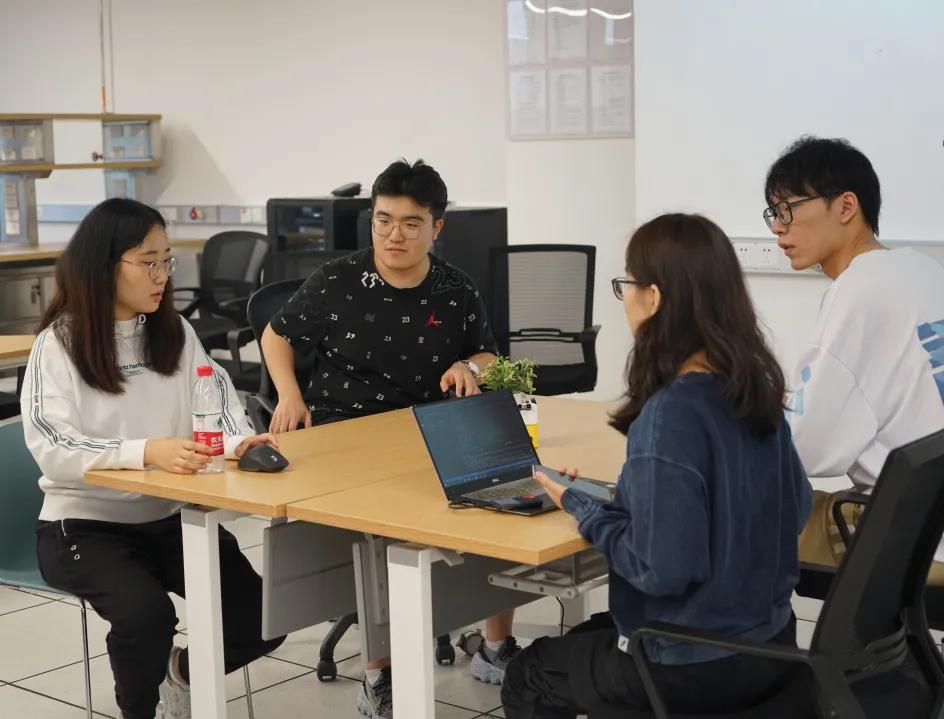
▲ Figure 9: Seat U: Sensing System for Real-time Library Seat Occupation Detection
Both the instructors and the team supervisors were positive about the final outcome of most of the teams' projects, and Professor Butala recalled how he taught the ECE 110 course during the same set of students' freshman year, “Comparing the group projects from ECE 110 to the senior design projects, it is incredible how far the students have come and how much they have learned in just a few short years. I was the mentor for two projects this year. Given my regular, direct interactions with them, I feel I can best assess these teams. I was blown away by the final results: the end products were functional, professional, and well-engineered and I was especially delighted by the quality of their final reports.” Professor Arne Fliflet also suggested that through this course, it was found that the students were less involved in the specific details of microprocessor-based device development (e.g., PCB design), and he hoped that in the future, by providing more relevant information and training, the students would be better equipped to carry out cross-disciplinary engineering design.
With the successful completion of the senior design course, ZJUI has taken another solid step in the exploration of cross-disciplinary engineering teaching practice, breaking the barriers of traditional majors, and building an innovative engineering education organization that embraces multidisciplinary interaction.





